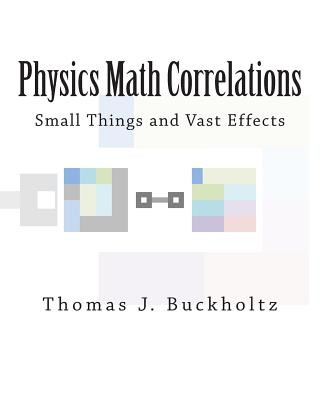
- We will send in 10–14 business days.
- Author: Thomas J Buckholtz
- Publisher: CreateSpace Independent Publishing Platform
- ISBN-10: 1502918749
- ISBN-13: 9781502918741
- Format: 20.3 x 25.4 x 0.7 cm, minkšti viršeliai
- Language: English
- SAVE -10% with code: EXTRA
Reviews
Description
What elementary particles remain not found? What phenomena would their existence explain? We try to answer those questions. We use the following steps. Find math for which some solutions correlate with known elementary particles and with interactions in which the particles partake. Assume that other solutions correlate with undiscovered particles and interactions. Consider the new particles and interactions. Address known particle-physics problems. Address known astrophysics problems. Address known cosmology problems. Solutions point to dark-matter and dark-energy fermions. Solutions point to other particles. New particles may cause symmetry violations. New bosons may affect the rate of expansion of the universe. New particles may provide for other aspects of particle-physics, astrophysics, and cosmology. Solutions correlate with particle properties. For neutrinos, we predict masses and Dirac-or-Majorana fermion types. For leptoquark-like particles, we predict charges, masses, and minimum numbers of particles in particle clusters. The math features isotropic quantum harmonic oscillators. The math provides the solutions. The math provides a basis for quantum theory. The quantum theory correlates with phenomena for which people associate models based on general relativity.
EXTRA 10 % discount with code: EXTRA
The promotion ends in 22d.03:08:14
The discount code is valid when purchasing from 10 €. Discounts do not stack.
- Author: Thomas J Buckholtz
- Publisher: CreateSpace Independent Publishing Platform
- ISBN-10: 1502918749
- ISBN-13: 9781502918741
- Format: 20.3 x 25.4 x 0.7 cm, minkšti viršeliai
- Language: English English
What elementary particles remain not found? What phenomena would their existence explain? We try to answer those questions. We use the following steps. Find math for which some solutions correlate with known elementary particles and with interactions in which the particles partake. Assume that other solutions correlate with undiscovered particles and interactions. Consider the new particles and interactions. Address known particle-physics problems. Address known astrophysics problems. Address known cosmology problems. Solutions point to dark-matter and dark-energy fermions. Solutions point to other particles. New particles may cause symmetry violations. New bosons may affect the rate of expansion of the universe. New particles may provide for other aspects of particle-physics, astrophysics, and cosmology. Solutions correlate with particle properties. For neutrinos, we predict masses and Dirac-or-Majorana fermion types. For leptoquark-like particles, we predict charges, masses, and minimum numbers of particles in particle clusters. The math features isotropic quantum harmonic oscillators. The math provides the solutions. The math provides a basis for quantum theory. The quantum theory correlates with phenomena for which people associate models based on general relativity.


Reviews